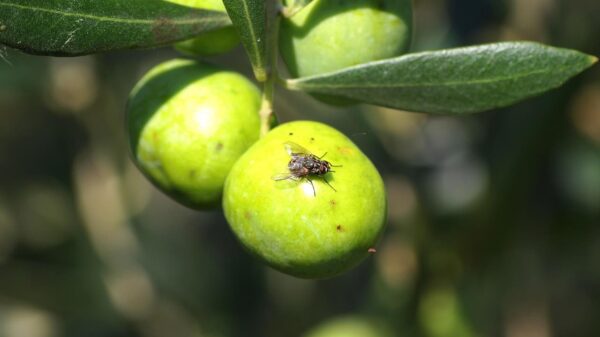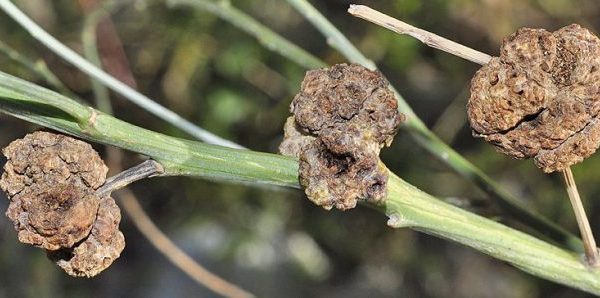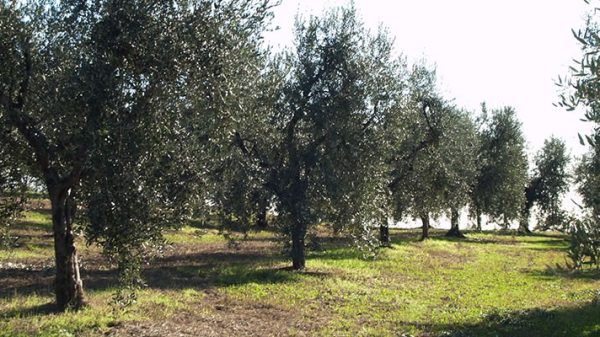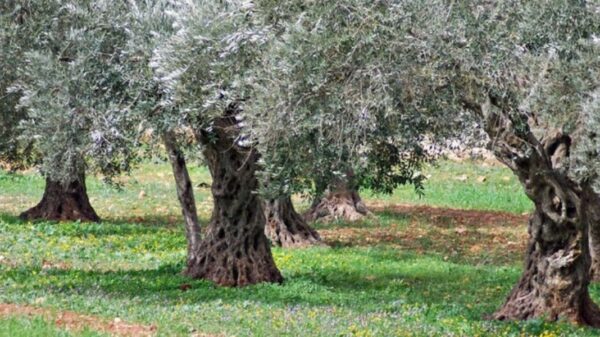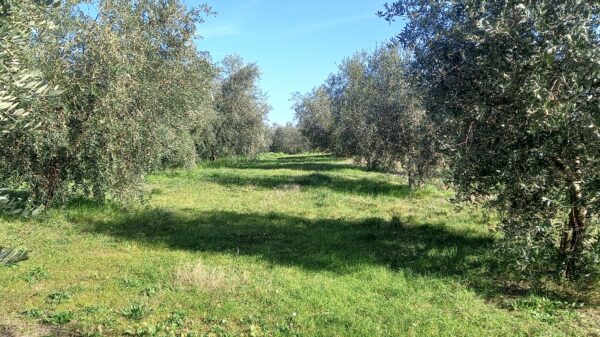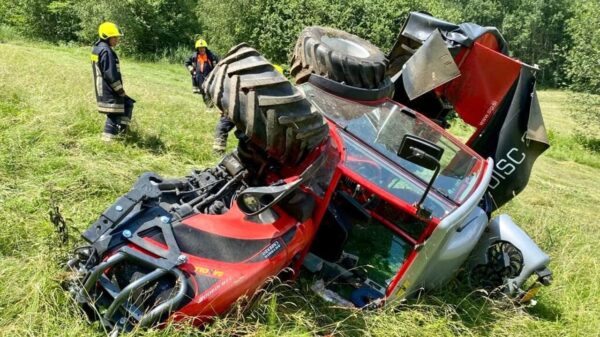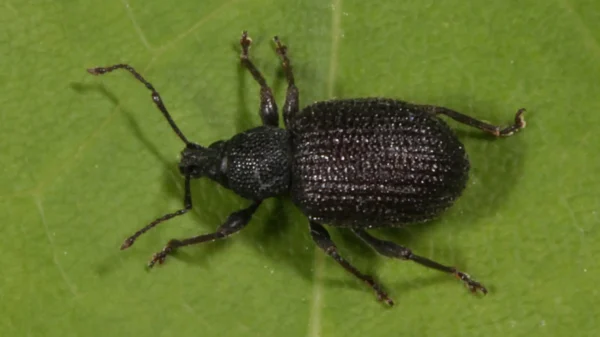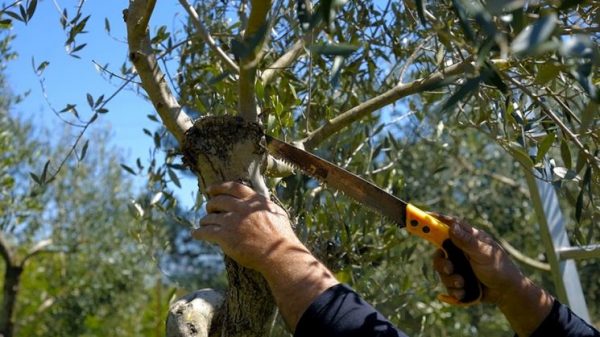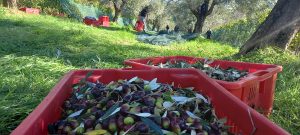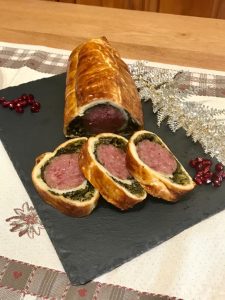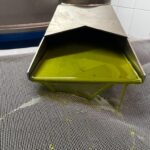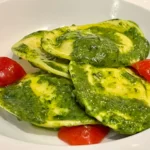 In these winter months it is recommended, to those who have olive groves older than forty years or with the presence of debilitated plants, of controllare if in the plants there is the presence of caries. The caries of the olive tree, also called Lupa, is a hypnokereutic disease, because the responsible pathogenic fungi (of the genera Fomes, Ganoderma, Phellinus, Polyporus, Stereum) decompose cellulose, a white, elastic, fibrous compound, e lignin, this is also a brown product, which gives the wood rigidity and resistance. Cellulose and lignin they are used by pathogenic fungi to obtain nourishment and energy for their growth and reproduction.
In these winter months it is recommended, to those who have olive groves older than forty years or with the presence of debilitated plants, of controllare if in the plants there is the presence of caries. The caries of the olive tree, also called Lupa, is a hypnokereutic disease, because the responsible pathogenic fungi (of the genera Fomes, Ganoderma, Phellinus, Polyporus, Stereum) decompose cellulose, a white, elastic, fibrous compound, e lignin, this is also a brown product, which gives the wood rigidity and resistance. Cellulose and lignin they are used by pathogenic fungi to obtain nourishment and energy for their growth and reproduction.
These fungal parasites are called lignivorous or xylovous fungi and penetrate the olive wood when there have been previous injuries, alter the internal tissues, expand generating their own softening, then provoking their own unraveling, until they are reduced to dust.
Probably, these lignivorous fungi first penetrated the wood they needed some help by colonizing microorganisms, who have previously prepared the ground, neutralizing the defenses of the plant and creating the conditions in the woody tissues to subsequently help the intervention of the pathogenic fungi.
This type of fungi, through their mycelia, invade the tissues and, passing from cell to cell, alter the cell walls in a continuous degradation process.
The advance of the mycelia does not stop with low temperatures and, even during the winter, with temperatures between 5 and 7°C, they continue to expand in the wood, even if at a slower rate.
Plant defense
The olive tree tends to respond to the aggression of lignivorous fungi by producing toxic compounds or build a woody layer that works as a barrier, separating the infected wood from what will be born later, but it doesn't always succeed before the wood is damaged.
Symptoms of tooth decay
This disease can be located on one or more portions of the plant or it can affect various portions at the level of the crown, along the stem, in the internal parts of the plant or sometimes not be so evident.
On the foliage the first symptoms reveal irregular growth and stunted, dry more or less widespread, of the smaller leaves, microphyllia.
Simultaneously, the plant shows a progressive deterioration with stunted vegetative development, desiccation of the aerial part and low production, sometimes it dies.
We can also notice more characteristic symptoms that appear on woody organs, stem or large branches, with the appearance of depressed areas, or swellings, disintegration of the tissues, cracks and the appearance of more or less large cavities, may present variations in color, appearance with the prevailing degradation of lignin, by the ligninolytic enzymes .
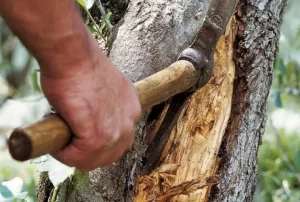 The affected tissues from caries progressively losing elasticity, resistance and volumebecome fragile and permeable, with a consequent reduction in the load capacity of both the branches and the trunk, thus compromising the stability of the plant, which is easily subject to dangerous breakage.
The affected tissues from caries progressively losing elasticity, resistance and volumebecome fragile and permeable, with a consequent reduction in the load capacity of both the branches and the trunk, thus compromising the stability of the plant, which is easily subject to dangerous breakage.
These symptoms can be confused with those of other diseases.
Others can be added to these first manifestations, such as depressed areas or swellings, fissures, disrupted tissues, more or less large cavities. As a diagnostic element, the presence of fruiting bodies of the mushrooms, carpophores, at the base or along the trunk is added, these are evident when the woody parts are already damaged and the infective process is now advanced.
Prevention measures
Surely the most effective method of defense against the decay of the olive tree is prevention, aimed at maintaining good vegetative states with fertilization and defense against parasites.
Healing
If the caries has already penetrated the plant, an active defense is implemented through the removal of decayed wood until it reaches healthy tissue.
Such an operation is called slugging and is implemented withuse of special tools, such as a chainsaw or hatchet. To prevent further spread of the disease, infected wood or diseased, debilitated or dead plants should be cleared and destroyed.
Following the removal of the damaged wooden parts it will be necessary to disinfect these wounds using concentrated solutions of copper sulphate. It is possible to prepare a protective paste on the farm using cupric products dissolved in a little water and added with vinyl glues, such as Vinavil.
Enzo Gambin, agronomist, director of Aipo
(Interregional association of olive producers)
